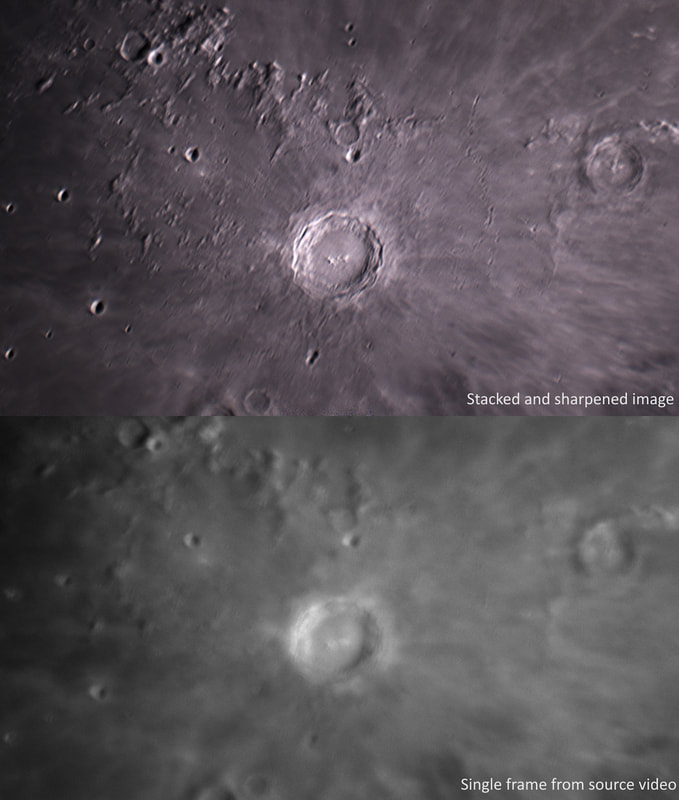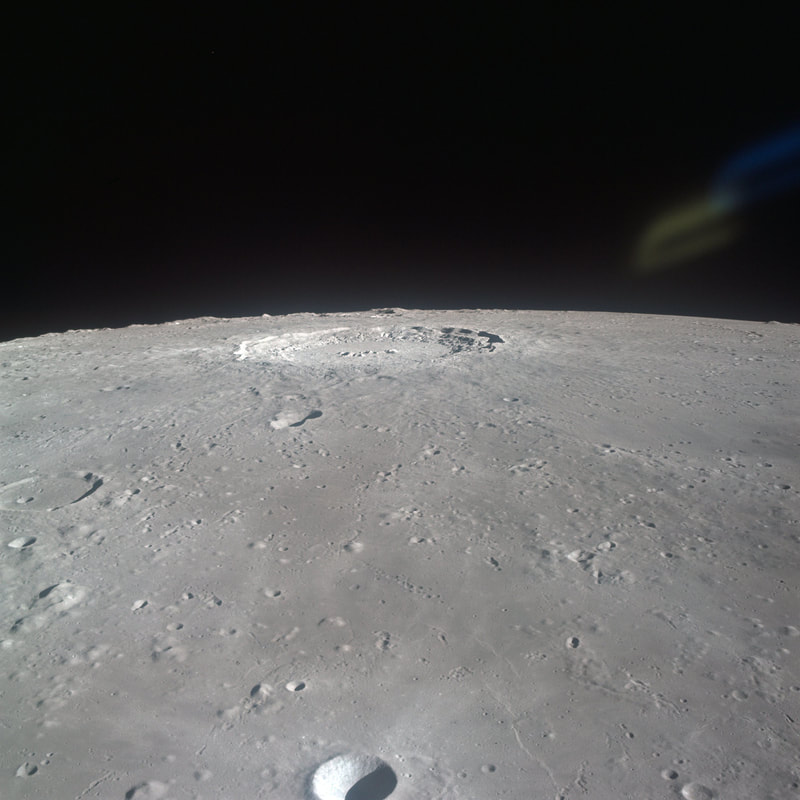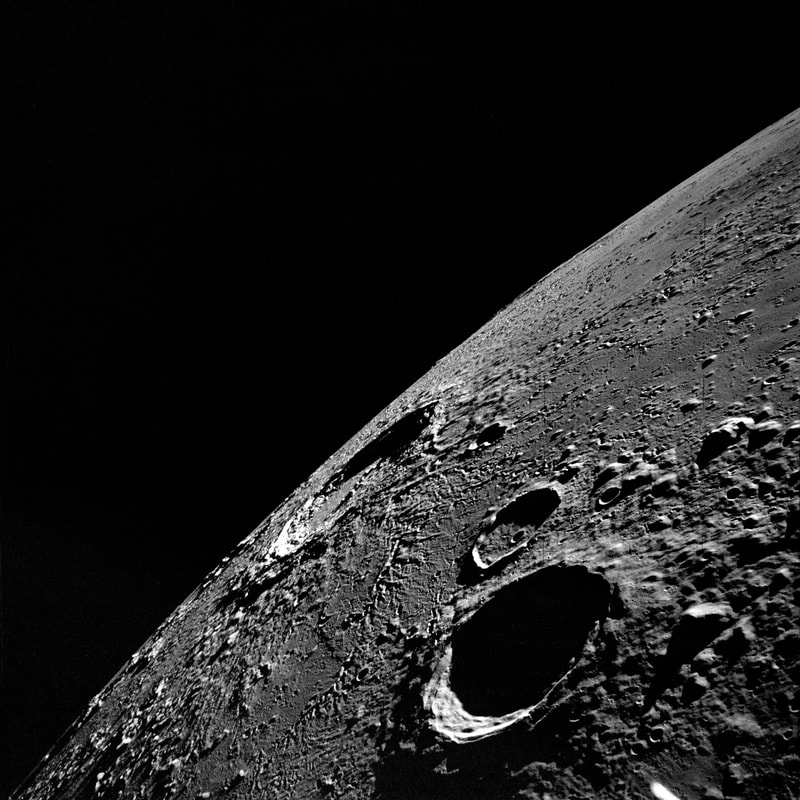|
Sometimes "CSI enhance" really works, just not with blurry CCTV footage of hardened criminals. The biggest obstacle to taking clear images of the Moon and planets is Earth's turbulent atmosphere, which causes a heat -haze like effect. Astronomers use a technique called lucky imaging to overcome this. A video is taken of the target and stacking software used to identify and combine the sharpest frames. This makes it possible to recover detail impossible to see in the source video or at the eyepiece.
The image above was taken with a 12" dobsonian telescope with a 2x barlow lens, giving an effective focal length of 3,000mm. For comparison, a very large telephoto lens might have a focal length of 600mm, one fifth the magnification. AutoStakkert 3.1.4 was used to analyse and stack the source video. As well as the atmospheric turbulence it was able to cope with some uneven motion from the telescope as it tracked the target crater imperfectly. So why doesn't technique this work with CCTV footage? If the subject stays quite still it is possible to recover a bit more detail by combining frames, but this won't work if they are moving. Also, the quality of any image is constrained by the size and quality of the optics, and the image sensor. A small lens and cheap sensor produces images with limited resolution even under the best conditions. Copernicus crater, on the near side of the Moon, is 93km across and 3.8km deep - not quite big enough to fit the county of Cornwall inside it. It's a relatively young crater, thought to have excavated by an impact some 800 million years ago. It's surrounded by a visible system of rays pointing outwards, lighter materiel that was ejected and that still lies on the Moon's surface. The best place to photograph it is from Lunar orbit rather than the surface of the Earth, 360,000km away, but that's not an option for most astronomers. These two spectacular images were taken during the Apollo 12 mission.
0 Comments
Your comment will be posted after it is approved.
Leave a Reply. |
Archives
May 2020
Categories
All
|



 RSS Feed
RSS Feed